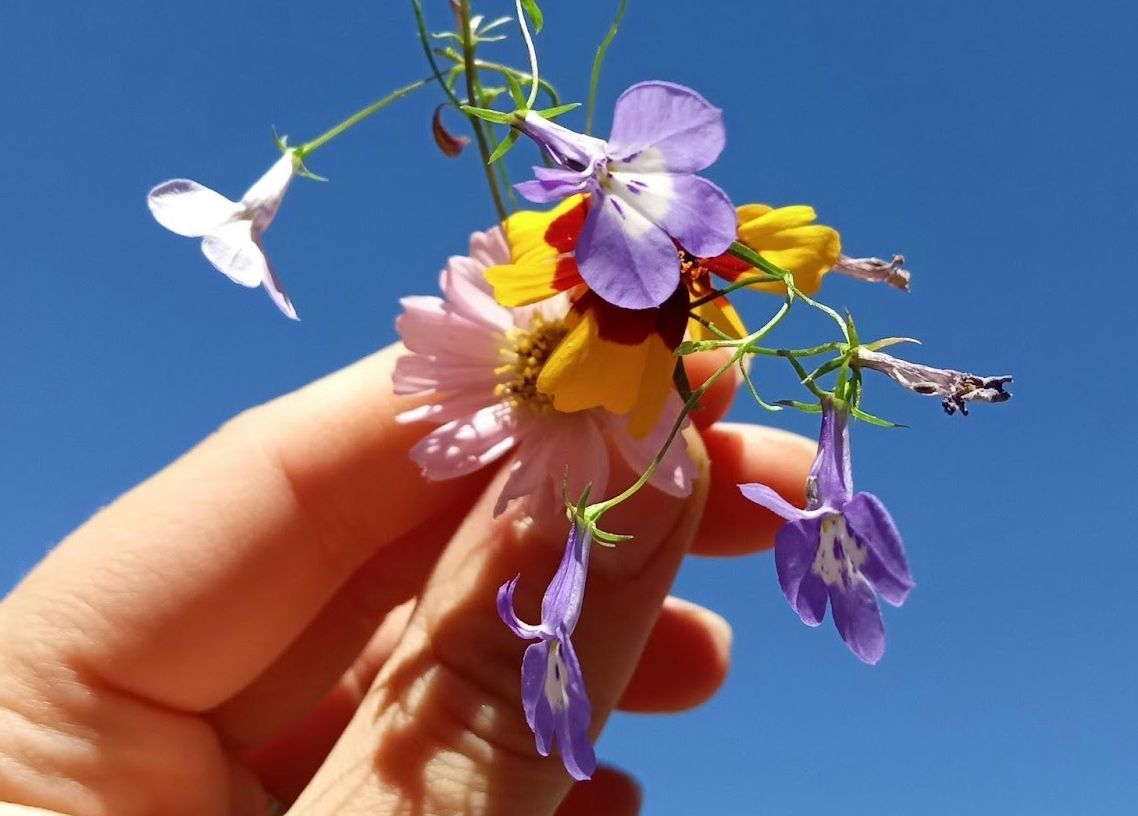Expressions inspired by the body
Anatomy of language: Exploring the origins of our most vivid expressions
Published on August 16, 2025
 Credit: Zeynep Sümer
Credit: Zeynep Sümer
It’s curious how often language uses parts of the body as metaphors for expressing complex or abstract ideas. Can you easily think of a synonym for a "knee-jerk reaction" or for a "brainstorm"? We are well acquainted with the mechanics of our body parts, but when did we decide on the meanings of "heartfelt" or "footnote"? Let’s explore the history of these everyday terms and decode the symbolism of our anatomy.
Footprint
 Credit: Pascal Müller
Credit: Pascal Müller
The marks our steps leave behind have been called "footprints," whether literally or figuratively, for at least a few centuries. The literal meaning first appears in records from the mid-16th century, notably in the work of English lexicographer Richard Huloet in 1552.
The idea that humans, as they move through life, leave behind a "digital footprint" or "carbon footprint" is far more recent, gaining popularity in the last 50 years. The term invites us to visualize the impact of one’s actions as something tangible—like a footprint in the sand. But why choose the feet, and not "handprints" or "fingerprints"? Perhaps because modern society often associates footprints with marks that are both significant and enduring, like those left by the first astronauts on the Moon.
Knee-jerk
 Credit: Ketut Subiyanto
Credit: Ketut Subiyanto
When the tendon just below the kneecap is tapped, the leg’s reaction can surprise even us. This is known as the patellar reflex—an automatic, involuntary response. Over time, an impulsive response—such as abruptly changing the subject, leaving a room, or making a snarky remark—came to be described as a "knee-jerk reaction."
The first medical studies of the patellar reflex took place in the 19th century, and the "knee-jerk" metaphor gained popularity about a hundred years later. Ironically, while the neurological test indicates healthy nerve function, the term "knee-jerk" is often used pejoratively to describe reactions that are far from ideal.
Headstrong
 Credit: Mikhail Nilov
Credit: Mikhail Nilov
This word suggests that having a "strong head" is synonymous with being stubborn, rigid, obstinate, or even "hardheaded." If you are called bull-headed, pig-headed, or single-minded, you’re receiving a similar critique.
But what about the head made it a symbol of intransigence? These expressions draw on the metaphor of using one’s head as a battering ram—much like a bull charging forward. Unlike "pig-headed," however, headstrong is not always negative; it can also describe someone determined and persistent enough to achieve their goals.
Brainstorm
 Credit: Karolina Kaboompics
Credit: Karolina Kaboompics
When it first appeared in the late 19th century, brainstorm had a very different meaning—it described a sudden, irrational burst of mental activity, or even temporary insanity. Then, in 1948, advertising leader Alex Faickney Osborn gave it a new life in his book Your Creative Power, introducing "brainstorming" as a group creativity technique.
In this new sense, the word stood for a flurry of free-flowing ideas. Osborn’s method encouraged team members to propose solutions without judgment or self-censorship—every idea was welcome. Today, brainstorm has broadened further, describing not only collaborative sessions but also any solo burst of creative thinking and problem-solving.
Handpick
 Credit: Abigail Madison
Credit: Abigail Madison
There was a time when agricultural products had to be not only selected but also plucked one by one, by hand—a symbol of careful, thoughtful selection. That patient craftsmanship gave rise to the word handpick as early as the 1780s.
The adjective handpicked and the figurative use of the verb developed later, in a more modern context. Today, we use handpicked to describe any curated selection—from a guest list to an eclectic arrangement of furniture—even if no actual hands were involved in the choosing.
Heartfelt
 Credit: Engin Akyurt
Credit: Engin Akyurt
In ancient times, the heart was believed to be the source of emotion, thought, and love. Even after medicine revealed this to be inaccurate, the idea had already taken deep root in human culture.
The word heartfelt first appears in records around 1703, describing profoundly sincere emotions. Interestingly, the expression is almost exclusively used as an adjective. It never quite evolved into a verb or noun—you’d rarely hear of someone heartfeeling their apologies or congratulations.
Brainwash
 Credit: Karolina Kaboompics
Credit: Karolina Kaboompics
In the latter half of the 20th century, brainwashing captured the public imagination through spy thrillers and dystopian works such as George Orwell’s 1984 (1949) and films like The Manchurian Candidate (1962) or A Clockwork Orange (1972). The image was chilling yet vivid—a mind scrubbed clean of its beliefs, ready to be rewritten.
The term’s real-world origins are far from fictional. Journalist Edward Hunter is credited with popularizing brainwash in his reports on the Korean War, describing how U.S. soldiers captured by Chinese forces were allegedly subjected to intense psychological reconditioning. The expression is a direct translation of the Chinese phrase xǐnăo (洗脑), meaning "to wash the brain."
Footnote
 Credit: Karolina Kaboompics
Credit: Karolina Kaboompics
Marginal annotations have existed for as long as texts themselves. Even handwritten manuscripts bore commentaries in their margins, left by readers, scholars, or dissenters. When such annotated works were transcribed, these remarks were often moved to the "foot" of the page—the very bottom of the text.
The practice proved just as useful after the invention of the printing press. Footnotes allowed authors and editors to add material even after the main body had been set in type. Over time, that space at the bottom became a strategic place for citations, clarifications, or tangential observations. Many languages, including Spanish and German, share with English this same metaphor: the extra note at the foot of the page is a footnote.
Heartthrob
 Credit: Shihab Nymur
Credit: Shihab Nymur
How did a beat of the heart come to mean an attractive person? Though heartbeat and heartthrob don’t seem closely related, heartthrob first appeared in the early 19th century, initially describing very strong emotions rather than the literal function of the organ.
By the 1900s, however, it evolved to describe someone who inspired those intense feelings in others. It wasn’t long before the term was applied to glamorous actors during Hollywood’s rise, cementing its meaning as charismatic men who made audiences swoon. Over time, heartthrob has continued to evolve, and today it commonly refers to people of any gender, celebrity status, or occupation.
Backbone
 Credit: Nastya Mind
Credit: Nastya Mind
The backbone has a fundamental function: to carry the weight of our body, enable movement, and keep us upright. The term has been known since at least the 15th century to refer to the literal spinal column—the series of vertebrae. But its figurative use came later.
By the 18th century, backbone had transformed into a symbol of inner strength, willpower, and even leadership or protection within a group. A resilient person might be said to have "grown a backbone," and a dependable worker is often called the "backbone of the team."










